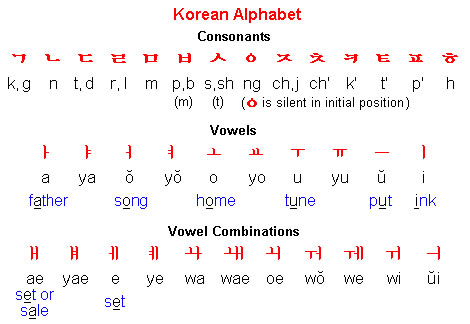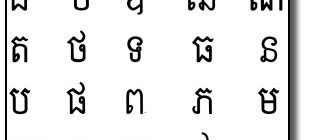Learning Korean alphabet symbols? Discover the history and decipher the Korean alphabet to learn the language…
The Korean language has distinct alphabets. It is known as Hangul in South Korea and Joseonguel in North Korea making it the native alphabet of the region. It is completely different from the logographic Chinese and Korean vocabulary system. It originated in the middle of the 15th century and became over time the official written text for both South Korea as well as North Korea.
It can be best described as a ‘phonemic’ alphabet that is classified by syllable blocks. Each individual block of these syllables has a minimum of 24 letters derived from the Hangul characters. Furthermore, at least one of the 14 consonants are present along with the 10 vowels in the alphabet. The beauty of the alphabet is that it can be written vertically in columns going from top to bottom and it is read from right to left. Apart from this the alphabet can be written in horizontal rows and then it is read from left to right.
The previous Korean alphabet had many more letters but eventually some of the Jamo phonologic was made obsolete.
There are many official names for the language starting with the one created in the year 1912 by Ju Sigyeong. Basically it can be broken up into two parts with the first syllable called Han meaning great in the Korean language while the second syllable of guel refers to the Korean word for script. It is utilized as Hangul when described in South Korea as the official language after the revised Romanization of the language. The alphabet and its subsequent language were considered very vulgar and part of the illiterate people’s dialect all the way up to the first quarter of the 20th century. The elite and literate class was more inclined towards utilizing the writing system known as Hanja for a more polished effect. However, the alphabet has completely disappeared from North Korea and is rarely found in South Korea anymore.
The History of Korean Alphabet Symbols
The Korean alphabet known as Hangul was created by Sejong the Great who was part of the Joseon dynasty and ruled as the fourth King representing that dynasty. By early 1444 the alphabet was completed and then documented in Hunmin Jeongeum, which was written by the Hall of Worthies.
The National Holiday that Commemorates the Korean Alphabet
In North Korea January 15 is celebrated as the national Hangul Day while the same celebrations are observed in South Korea on 9 October every year. This document is a comprehensive explanation of each design pertaining to the consonant letters with reference to their articulated phonetics along with the vowels that follow the yin-yang principle and create harmony in the alphabet.
Ease of Use of the Korean Alphabet
This alphabet was clearly differentiated from the Chinese script and explained in detail in the document. In fact before the alphabet was created for Korean nationals, a large number of the local population was illiterate. The foresight of the fourth King was evident in the creation of an alphabet that could be learned by the even most ignorant person, making everyone emancipated in terms of literacy in Korea.





